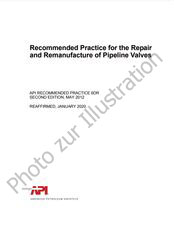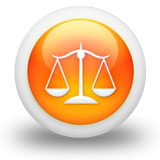Wir benötigen Ihre Einwilligung zur Verwendung der einzelnen Daten, damit Sie unter anderem Informationen zu Ihren Interessen einsehen können. Klicken Sie auf "OK", um Ihre Zustimmung zu erteilen.

API PUBL 4465-ed.1987
Evaluation of Treatment Technologies for Listed Petroleum Refinery Wastes
Name übersetzen
NORM herausgegeben am 1.12.1987
Informationen über die Norm:
Bezeichnung normen: API PUBL 4465-ed.1987
Ausgabedatum normen: 1.12.1987
SKU: NS-1139753
Zahl der Seiten: 200
Gewicht ca.: 631 g (1.39 Pfund)
Land: Amerikanische technische Norm
Kategorie: Technische Normen API
Die Annotation des Normtextes API PUBL 4465-ed.1987 :
API PUBL 4465, 1987 Edition, December 1987 - Evaluation of Treatment Technologies for Listed Petroleum Refinery Wastes
A number of technologies for the treatment of listed petroleum refinery oily wastes were evaluated in this study. The technologies studied were mechanical treatment (filtration), solvent extraction, thermal treatment (drying), chemical fixation and pyrolysis. In several cases the application of two treatment technologies in series was studied, e.g. filtration followed by drying, drying followed by fixation. No attempts were made to develop limits of operability for the subject treatment technologies nor was consideration given to the cost of various technologies. As evaluation tools, the reductions in mass from feed to product residues and the reductions in constituent leachate concentrations from feed to product residues were evaluated.
All of the technologies tested produced a residue of substantially reduced hazard, as measured by leachable concentrations (using TCLP) of hazardous constituents in the product solids. Four of the technologies also reduced the total constituent concentrations.
Table 1-1 allows a comparison of treatment efficiency among these technologies. It shows average residual concentrations (mg/kg) of ten indicator compounds in the product solids from four of the five treatment technologies which were evaluated. The order of decreasing efficiency, based on residual levels of organics, was: pyrolysis > solvent extraction > mechanical/thermal drying > mechanical treatment. The percent reduction for the eight organic compounds was 97 - 99 % , for three of the four treatment technologies, based on average raw feed constituent data. Percent reduction values were lower for mechanical treatment. Metal levels were not changed significantly by any of the treatment processes. Actual percent reductions for each technology are shown in the summary tables of Chapter 8 .
Table 1-2 allows a comparison of treatment efficiency among these technologies, based on the leachability of the product residues. It shows average concentrations (mg/L) of ten indicator compounds in the TCLP leachate from the product solids from the five evaluated treatment technologies. The order of decreasing efficiency based on the leachate concentrations of the eight organics was: pyrolysis > solvent extraction > mechanical/thermal drying > chemical fixation/thermal drying > chemical fixation > mechanical treatment. Drying the product solids prior to chemical fixation was more effective in reducing the leachability of the eight organic compounds. Chemical fixation was clearly the most effective in decreasing the leachability of the metals.
Figure 1-1 shows the percent average reduction in constituent weight and reduction in leachate concentrations of the raw feeds following treatment (mechanical, solvent extraction, mechanical plus thermal treatment, and chemical fixation or pyrolysis) for the three classes of compounds.
Results from the land treatment of refinery wastes are presented in another API report entitled, "Land Treatability of Appendix VIII Constituents Present in Petroleum Refinery Wastes" (API Pub. No. 4455). This study demonstrated the suitability of land treatment units to biodegrade organics and immobilize metals present in refinery wastes. Results of this land treatment study are compared to results from the treatment technologies in Chapter 8.
We believe that these two API reports provide technical support for the consideration of technologies other than incineration as best-demonstrated available technology (BDAT) for the treatment of refinery wastes.
Empfehlungen:
Aktualisierung der Gesetze
Wollen Sie sich sicher sein, dass Sie nur die gültigen technischen Vorschriften verwenden?
Wir bieten Ihnen Lösungen, damit Sie immer nur die gültigen (aktuellen) legislativen Vorschriften verwenden könnten.
Brauchen Sie mehr Informationen? Sehen Sie sich diese Seite an.



 Cookies
Cookies
